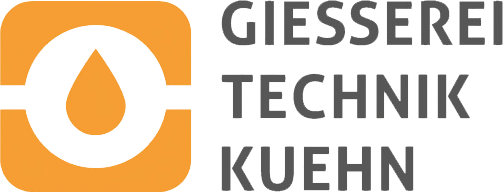16. October 2017
A Creative Mind for a Green Footprint
Renewable material and modern technology: for Uwe Kühn from Buscheritz near Göda the perfect match. For quite some time now he has been working on the cultivation and further processing of Miscanthus. Here he shows the chaffed plant material and a planter made from Miscanthus. The technology for the further processing of the plant material was developed and built by Uwe Kühn himself. © Steffen Unger
As so often in life, everything began by coincidence. On one of his business trips, eleven years ago, Uwe Kühn, the manager of a foundry technology company based in Buscheritz, a small place near Göda, came across Miscanthus. With the constantly rising heating costs for the private and company buildings on his farm premises at the back of his mind he began to develop an interest in this very special plant. Miscanthus, also known as Chinese Reed and growing up to three meters in height, appeared to be a suitable alternative to heating oil to him. As he also farms a few fields, he began to cultivate the plant. A few years later, he had made it: Uwe Kühn switched his heating system from oil-based to Miscanthus-based thus having found a much more cost-effective solution for heating. Today though, the chaffed plant is far too valuable to him just to be burnt “We burn nearly nothing anymore. Efficient material utilization is our focus now”. Kühn knew from the start that the biomass gained from the plant has much more potential than just its use for heat generation. Yet it has been a long way to find potential customers, buyers. But now his idea begins to take off. “We have noticed that people are becoming more and more open for these issues“, says Kühn, who not only tries to promote Miscanthus at events in the region, such as at the ‘Landpartie‘ in Gaußig or at the ‘Klostermarkt‘ in Panschwitz-Kuckau, but also transregionally and nationwide. His idea does not always meet the interest he thinks it deserves though. “We are supplying, among others, the stud farm Landesgestüt Sachsen-Anhalt“, Kühn says. Chaffed Miscanthus is also excellently suited as bedding in stables. Yet the Saxon stud farm in Moritzburg is not interested according to Kühn. Furthermore, he cooperates with horticultural businesses that use Miscanthus as a substitute for bark mulch; alas also these business partners are located rather far away, which, with the transport of the material over long distances, in Kühn’s opinion, somehow defies the idea of the CO2-binder Miscanthus’ positive effect for the environment.
Miscanthus in the Construction Industry
Uwe Kühn does not allow the little or no interest for his idea in his region to discourage him as there is increasing demand for the renewable material from many other sides. The construction industry for example is looking for a Styrofoam replacement as Styrofoam must not be used anymore, thus giving an insulating board, developed by a professor from Berlin more than twenty years ago, a chance for its application. Since April Uwe Kühn has been working on designing and building a machine for the manufacturing of these boards that are going to contain Miscanthus fibers. Uwe Kühn once studied material sciences and can now draw from his expertise and knowledge when developing the machine. As the owner and manager of a foundry technology company he is also predestined to build machines. One such new machine can be seen right now in one of his production halls in Buscheritz. It will shortly be installed at the pulp molding plant in Polenz near Neustadt where round planters will be manufactured from Miscanthus fibers. These planters can be filled with water and embedded in soil thus helping plants to root, especially in dry soils. The planters rot within eight months. To prevent the water from running off, the containers are coated with a special wax. Uwe Kühn developed a special technique for the coating of the planters. And the shrewd entrepreneur is involved in another really large project. In the next five years, twenty-two partners from various European countries will, under the leadership of the University of Hohenheim in Stuttgart, test new varieties of Miscanthus and develop new technologies for the processing of the plants. Uwe Kühn will be faced with two tasks within this project. On a field of eight hectars in size he will begin to grow five new varieties of Miscanthus next spring. Furthermore, he shall develop a machine that enables the separation of the cellulose edge layer of the plant from the core. The light material of the released core has good insulating properties with these properties being of special interest to the building material industry, as recently became clear at two fairs. But also the complete stem of the Miscanthus plant is usable. Kühn’s team is building swimming islands from these stems right now, islands which later can be planted and set afloat on nitrate-polluted waters. And there are still many more ideas in the pipeline. Together with others, Uwe Kühn will continue to use his creative mind for a green footprint – he will not tire of persuading people of the powers and potential of the magical plant Miscanthus.

